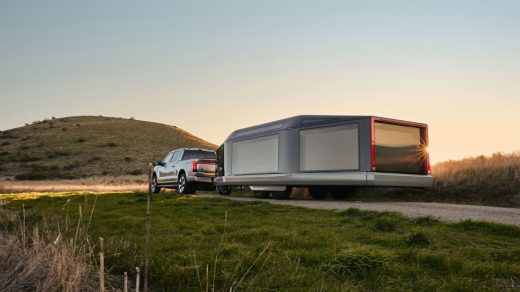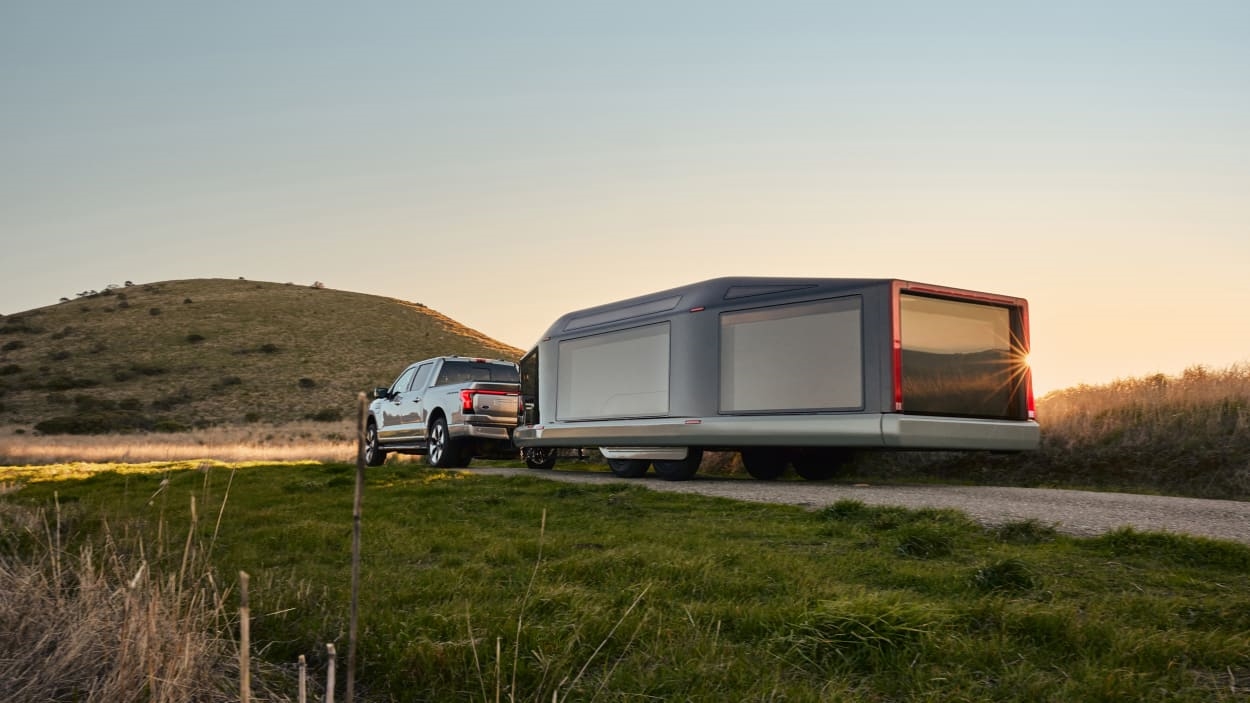This sleek electric RV was designed by two former Tesla engineers
Three years ago, stuck in a Bay Area apartment in the early months of the pandemic, Ben Parker quit his job as an engineer at Tesla, rented a Winnebago, and took off on a 6,000-mile road trip. He dove into research for what he saw as the next opportunity for a better electric vehicle: RVs.
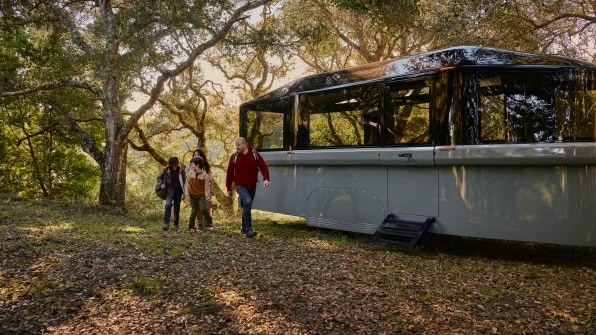
When he got back from the trip, he started working on a new RV battery-power system, and convinced a former Tesla product manager, Toby Kraus, to join him as a cofounder of a startup called Lightship. The company’s first electric RV prototype, a travel trailer unveiled this spring, has solar panels on the roof and a battery large enough that it can propel itself, so a truck towing it can save gas (or, if it’s an electric truck, drive farther on a charge). The RV, called the L1, can also power all the appliances onboard without the need for gas or propane generators.
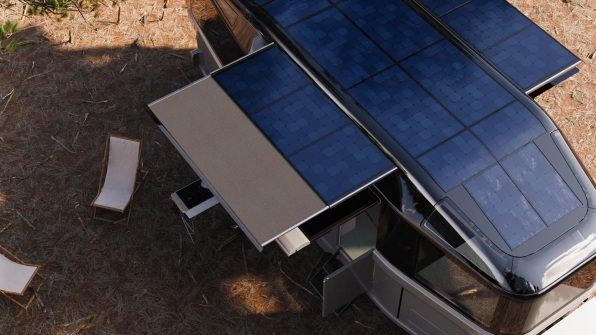
It was important to design a product that was better than the fossil-powered options on the market, the founders say. “One of the strongly held beliefs that Toby and I took from our time at Tesla is that, beyond a niche market, sustainability alone does not sell,” says Parker. “For an electric product to become mainstream, it must provide a fundamentally better use and ownership experience than the products already out there. One of the things that got us excited as we laid out the blueprint for the L1 was the realization that it could provide a better experience for the incumbent market of RVers who tow with a gas or diesel truck.”
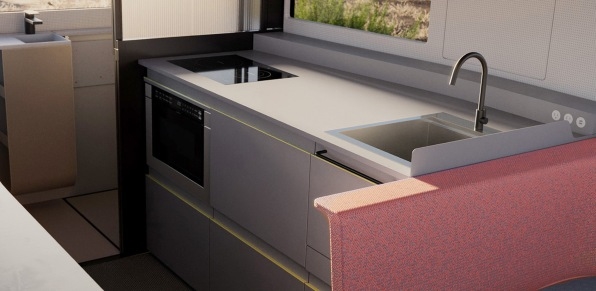
The idea had started first with food trucks. While working at Tesla, Parker grabbed lunch each day from one of the trucks outside the company’s Palo Alto headquarters. Each truck ran on noisy, smelly diesel or gas generators. “You’re having to yell over a generator and smell generator fumes to get your sandwich,” he says. In his spare time, he began to explore the idea of helping them convert to electricity. Then he realized that RVs had a similar need for clean portable power—and a much larger market, with around half a million sold in the U.S. each year.
Designing the first product was a different challenge than building an electric car. “We’re building an EV, but it is also a residence or a dwelling,” Parker says. “You have to think about all of the design considerations for making it a really nice living space on the inside.”
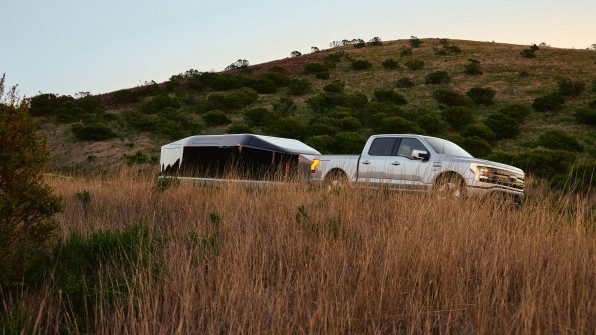
The RV is large, at 27-feet-long by eight-and-a-half-feet-wide, and feels more spacious because the top is designed to rise up to 10 feet high when you stop to camp. On the road, it lowers down to become more aerodynamic. “The number one thing you can do to make a super aerodynamic trailer is minimize the frontal area of the vehicle,” says Kraus. “That’s the primary reason why trailers now are so inefficient—it’s like towing a sail.” On top of the RV, the solar panels are also flush to the roof to make it more aerodynamic.
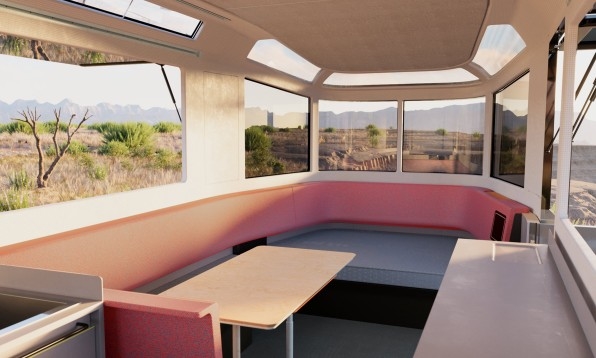
Panoramic windows surround the vehicle, so it feels like you’re outside. (At night, you can push a button to darken the glass for privacy.) A lounge at one end of the space converts into a bed; a dinette table also drops down to become a second bed. A full kitchen includes an under-counter fridge and a water-saving dishwasher. From the bed, a skylight offers a view of the night sky.
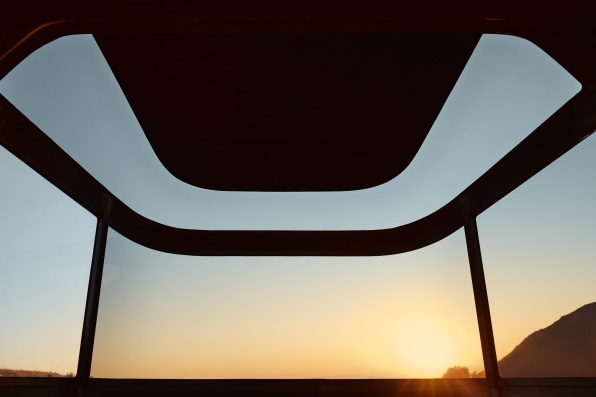
Other companies are also working on electric RVs, and Winnebago and Airstream have both released prototypes. Another startup from former Tesla and SpaceX engineers, called Grounded EV, is working on an electric camper van. A company called Bowlus started selling a luxury electric trailer in 2022. Lightship, which just signed a lease on its pilot production plant, expects to begin manufacturing late next year. (Like other RVs, it will be pricey, with a starting price of $125,000 or $118,400 after tax credits.)
The company wants to reach customers who might not yet own other electric vehicles and “build a gateway to electrification,” Parker says. That includes introducing people to other electric appliances onboard, like a heat pump, so if their furnace at home fails later, they’ll already be familiar with the electric alternative. “We have this idea of bringing electrification to new demographics of people with this,” he says.
Correction: This post was updated to clarify Toby Kraus’s former title at Tesla.
(16)

